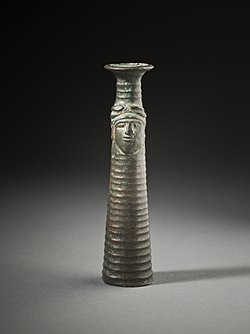
Article: “Ancient Iranian Kohl Makeup Uncovered Through Advanced Scientific Analysis”
Recent findings from the University of Tübingen, Germany, have revealed fascinating details regarding the formulation and application of black eye makeup, referred to as kohl, from the Iron Age Middle East. Spanning the 9th to the 7th centuries BCE, this type of makeup was widespread in the north-western region of Iran and has now been shown to consist of natural graphite and manganese oxide through thorough scientific investigation.
These discoveries represent a crucial advancement in comprehending the varied cosmetic practices that were present in the ancient era. Although the components of Egyptian kohl have been extensively examined and recorded—consisting of both inorganic and organic substances—the makeup recipes from the ancient Near East, especially Iran, have largely remained mysterious until this point.
The research team carried out their analysis on samples obtained from a ceramic cosmetic vessel, excavated from a grave in the Iron Age burial site of Kani Koter, situated in north-western Iran. This vessel was found alongside a variety of cosmetic implements, including a bronze mirror and silver earpicks, among other burial items. The opulence of this archaeological discovery indicates it was an elite burial ground, thus providing insight into the opulent lifestyle and cultural traditions of the region’s prosperous class.
Utilizing advanced methods such as micro x-ray fluorescence and micro-Raman spectroscopy, the researchers detected a composition of potassium, calcium, titanium, manganese oxide, and iron in the black powder. Remarkably, another pigment, graphite, was also identified, which might have given the kohl a distinctive metallic luster, enhancing its attractiveness as a cosmetic item.
In a striking difference from the famous Egyptian kohl, no organic materials were identified in the Iranian specimens. While this could suggest a difference in formulation, it is possible that any organic components employed may have deteriorated over the ages.
This groundbreaking revelation enhances our comprehension of ancient adornment practices, enabling us to assemble features of cultural identity and societal behaviors in areas found between historical Assyria and Iran. Silvia Amicone from Tübingen’s archaeometry research group noted the importance of the results, emphasizing the cultural life of the elites and their refined standards of appearance.
As investigations progress, these results not only expand our historical insights into cosmetic components but also enrich our understanding of the intricate social frameworks and cultural interactions that influenced personal aesthetics in ancient times.